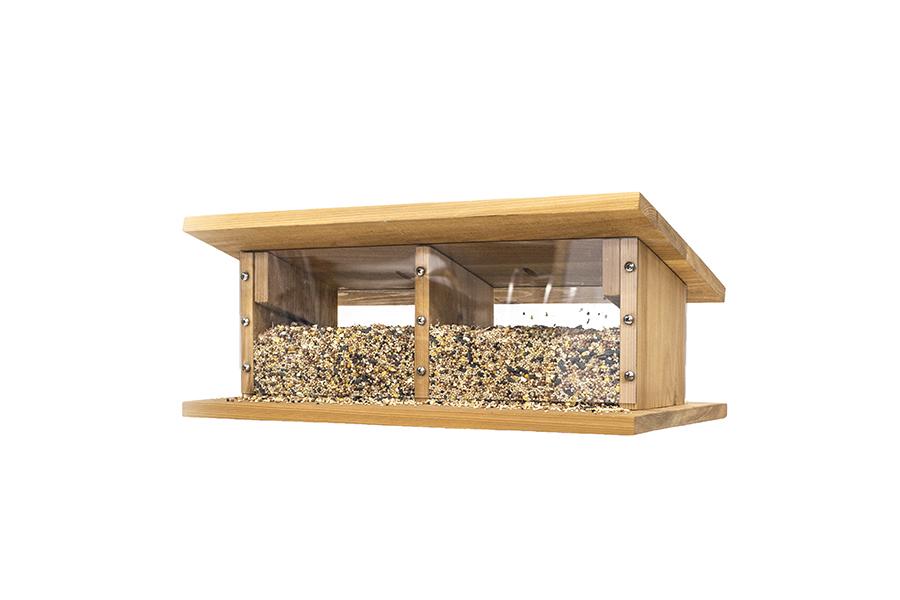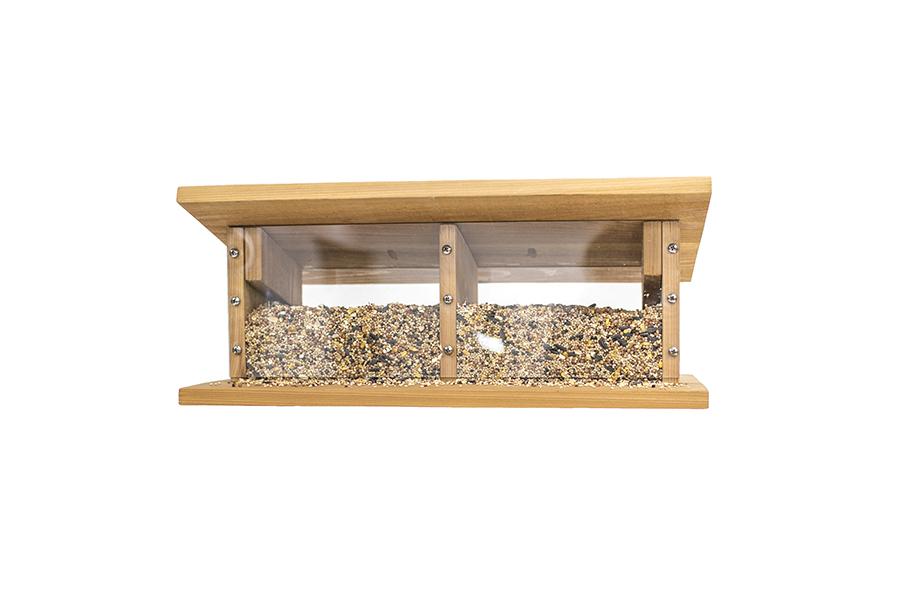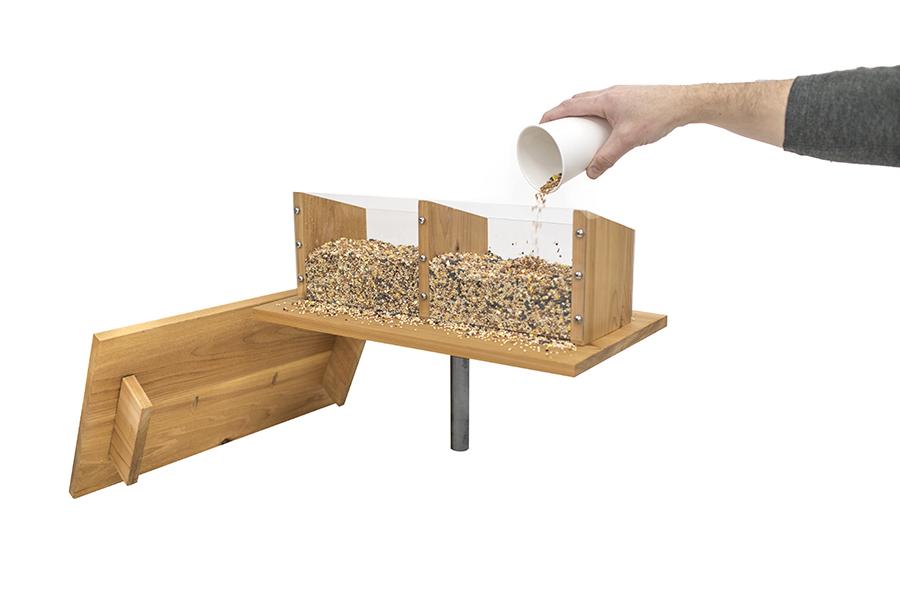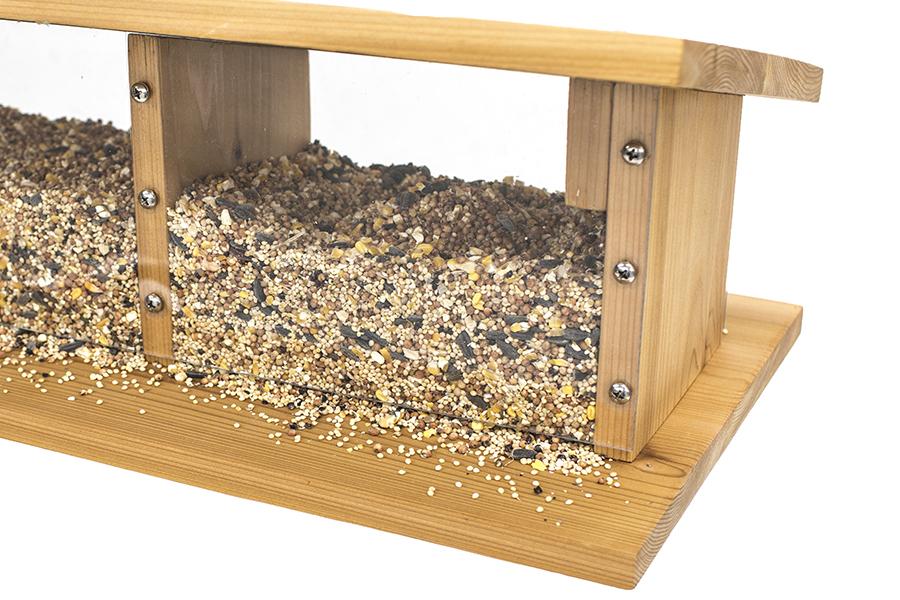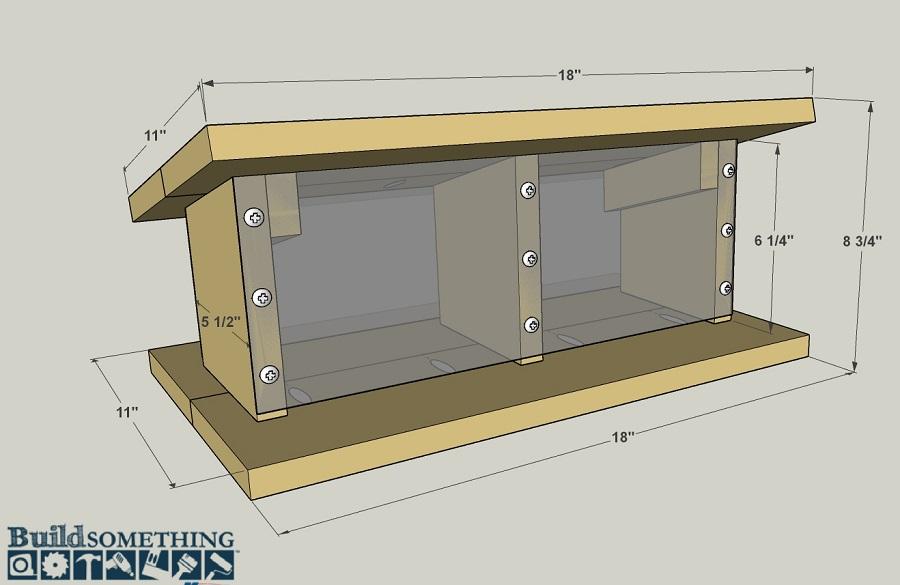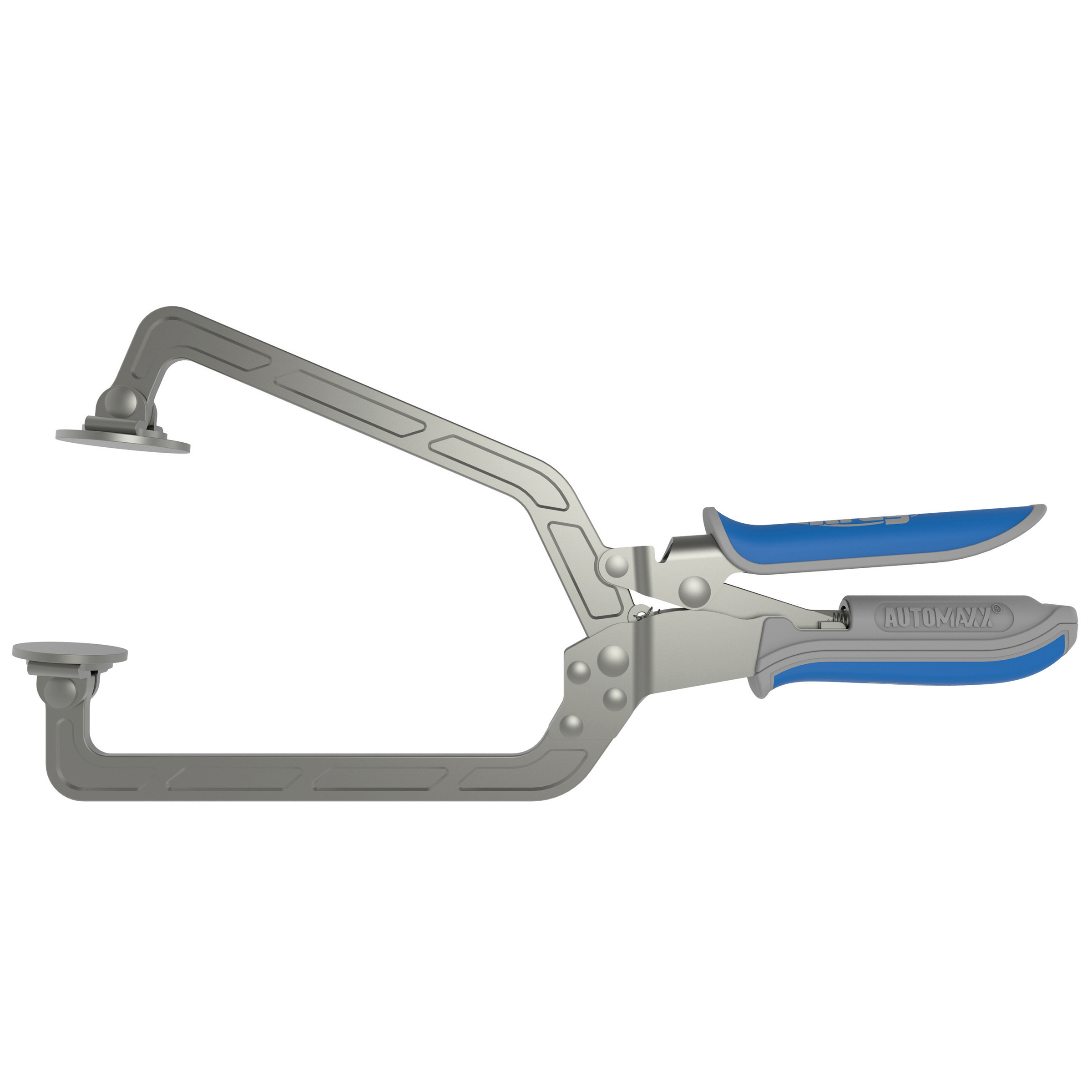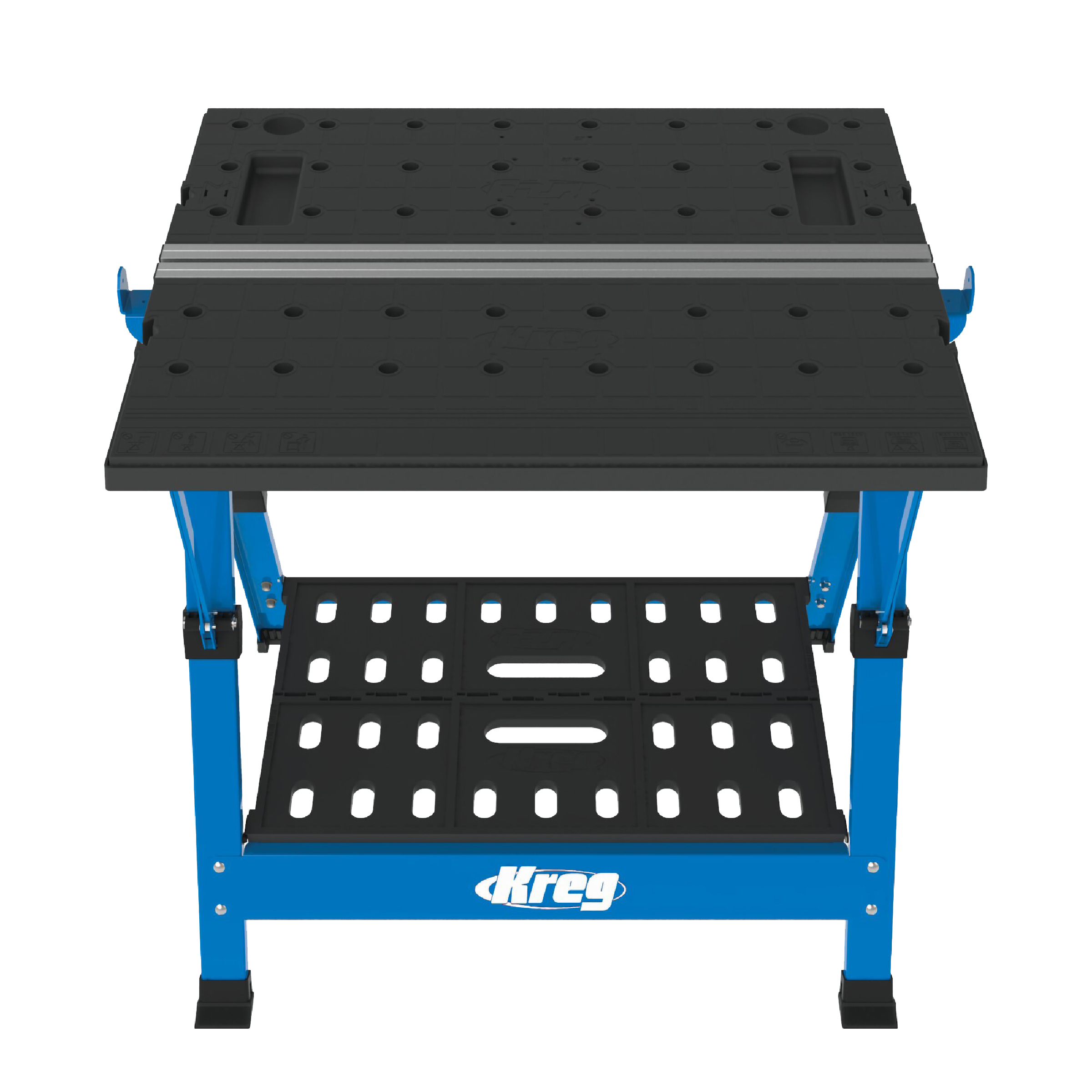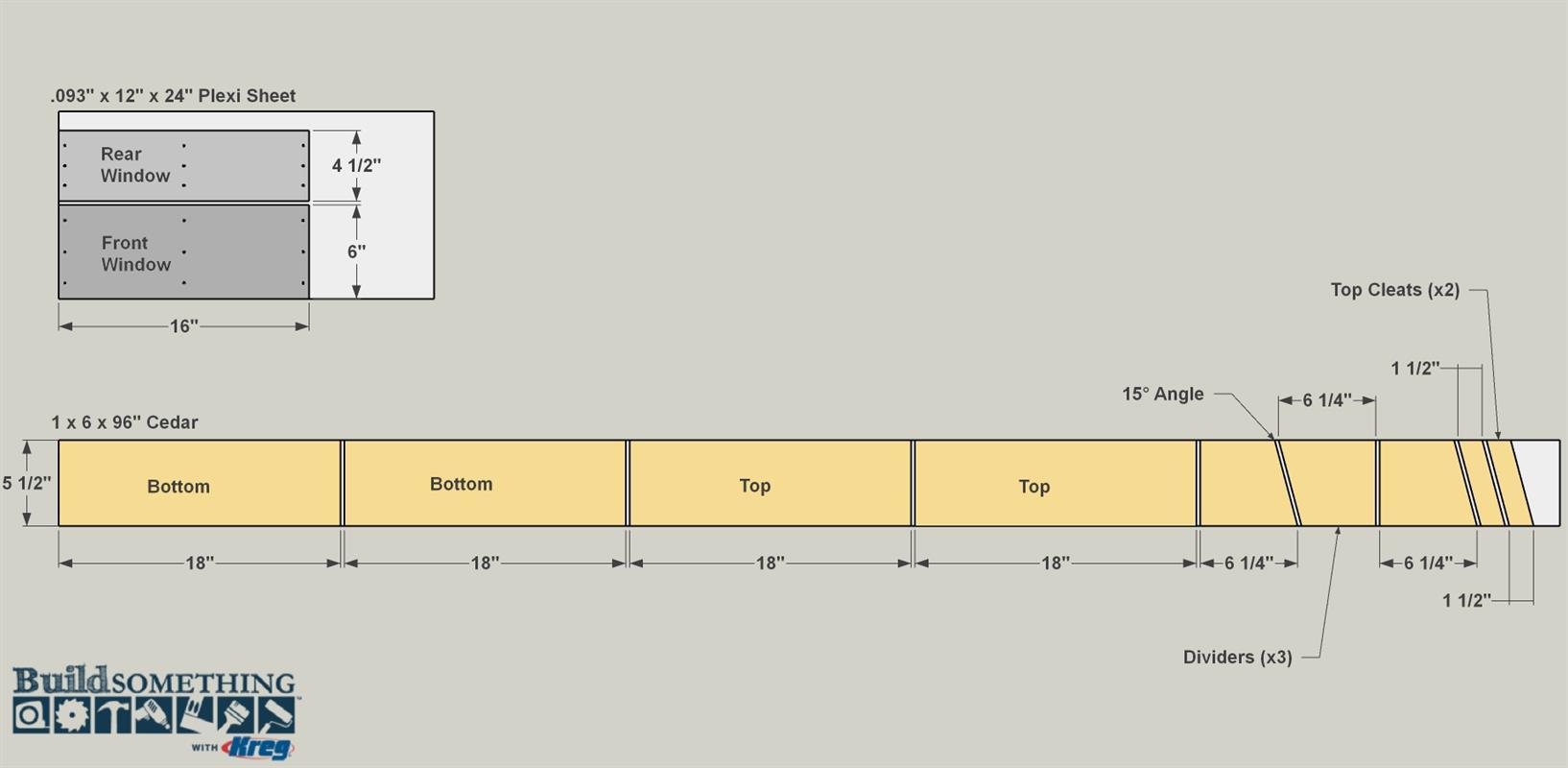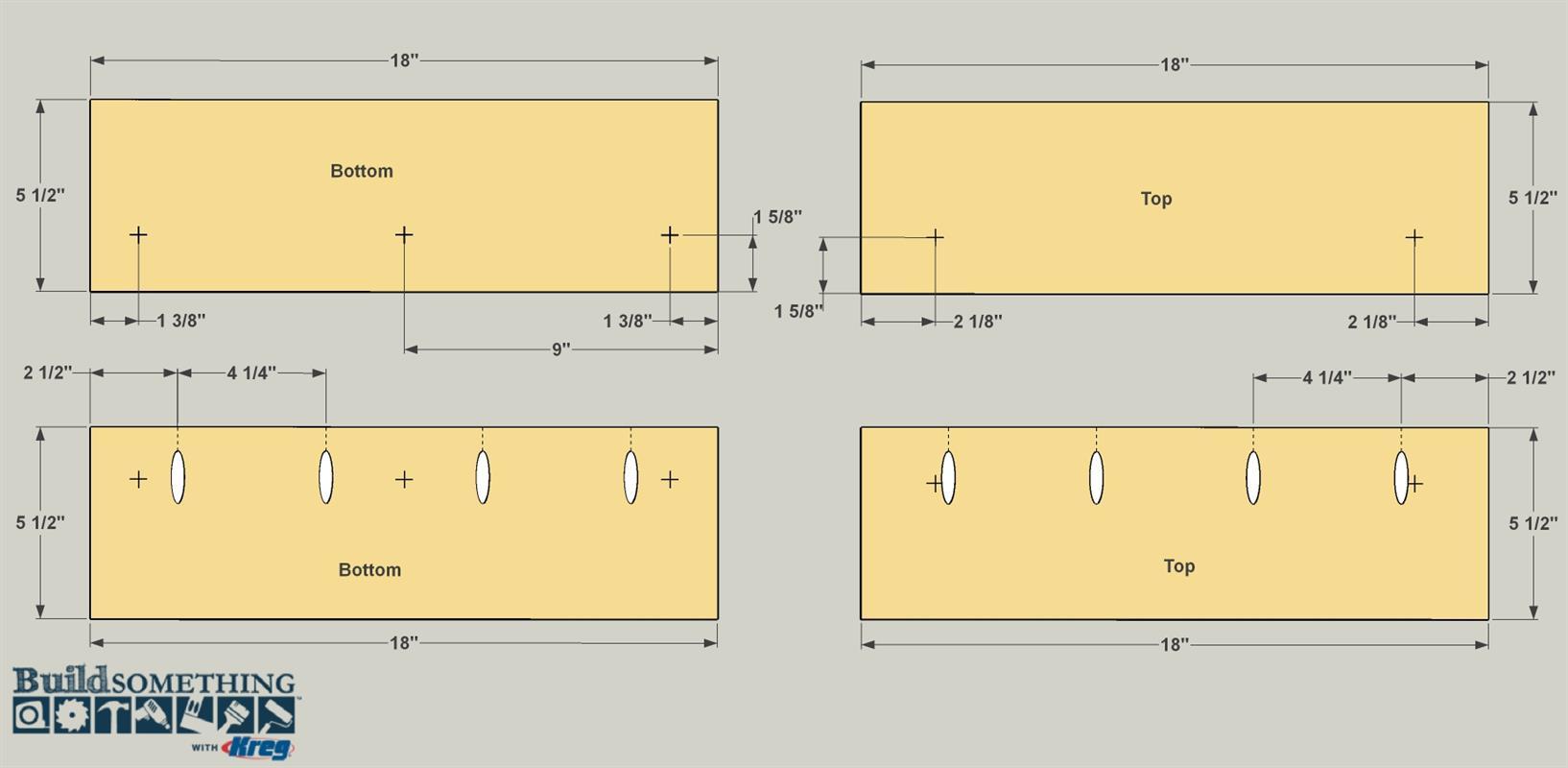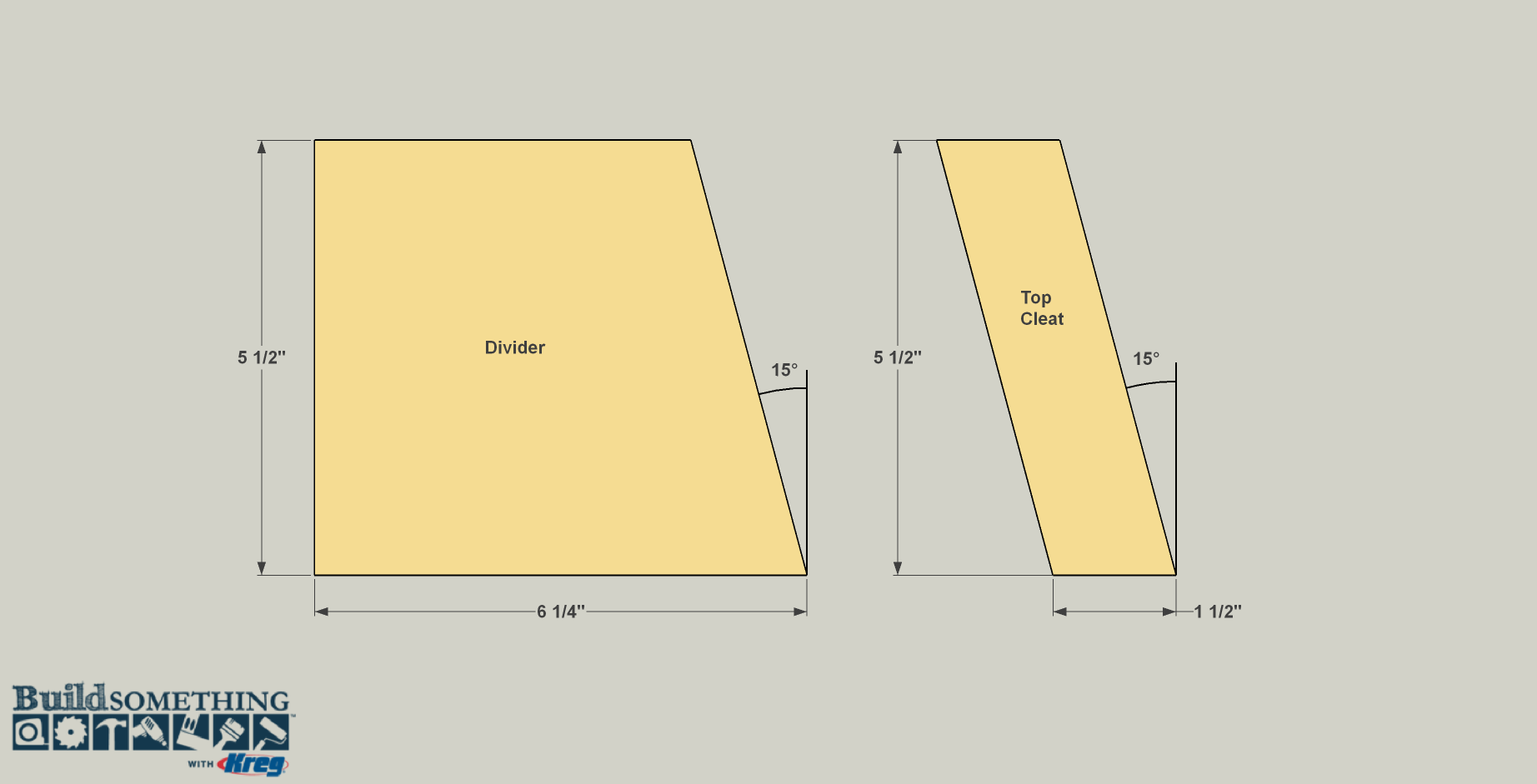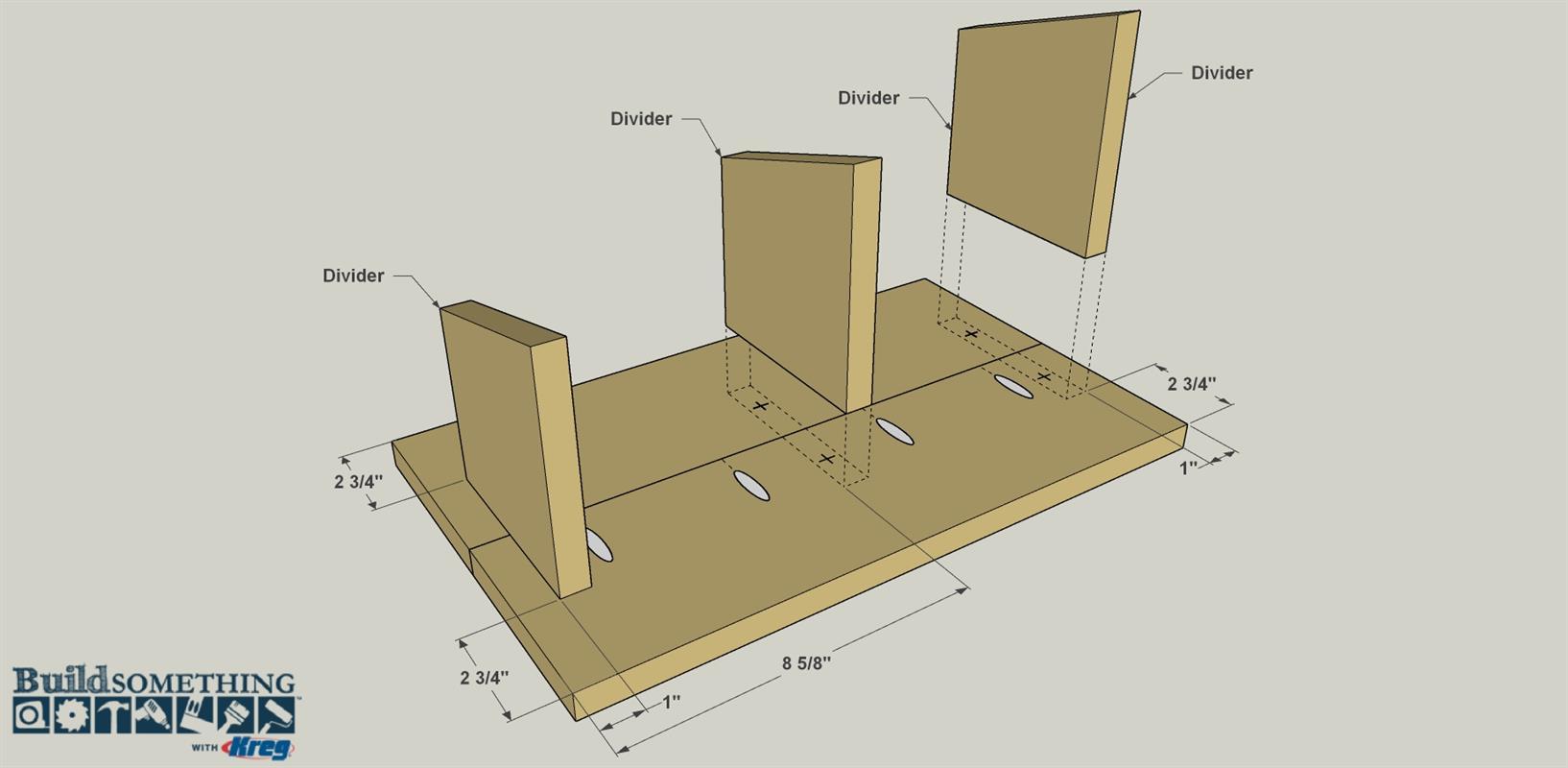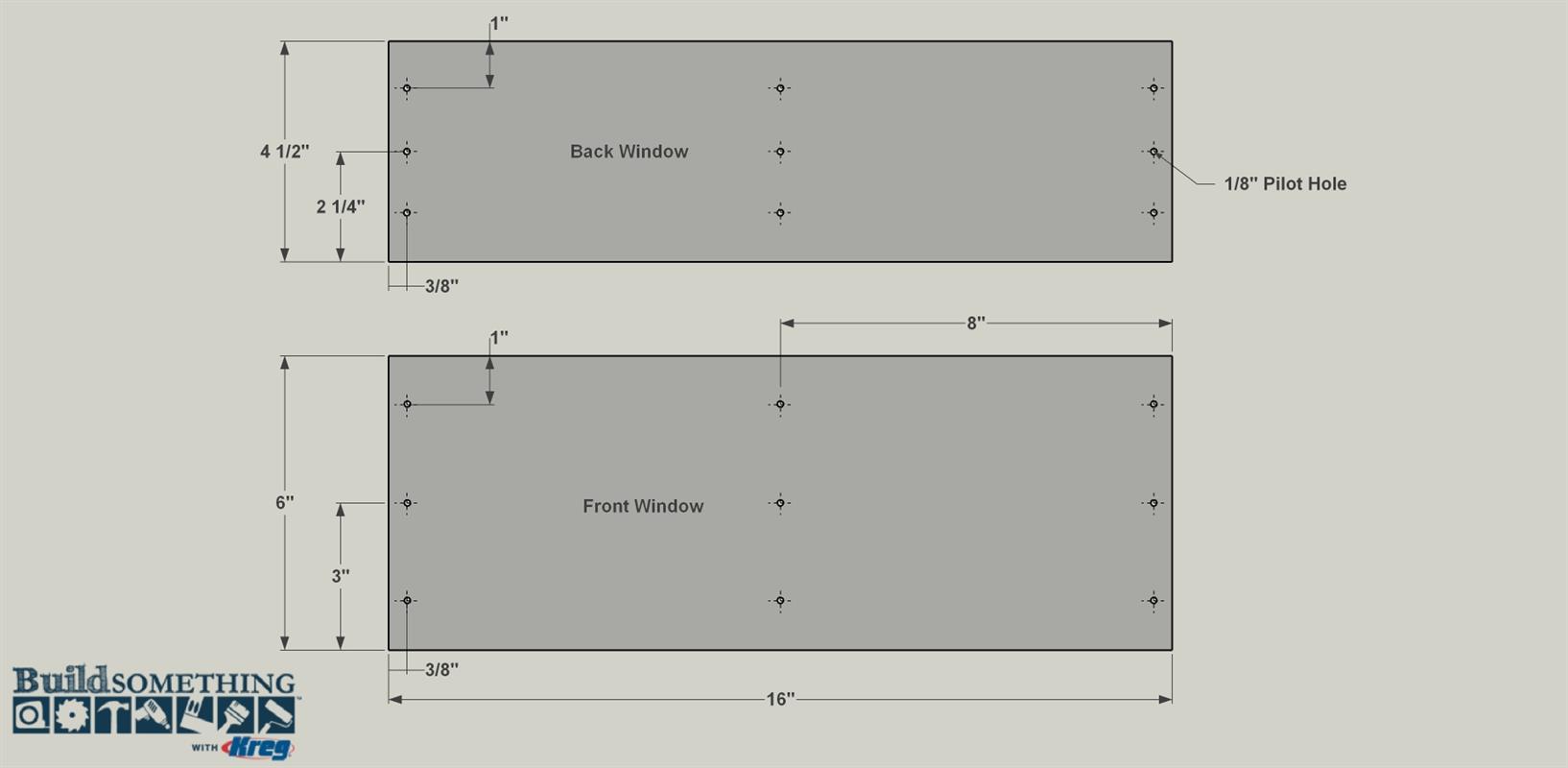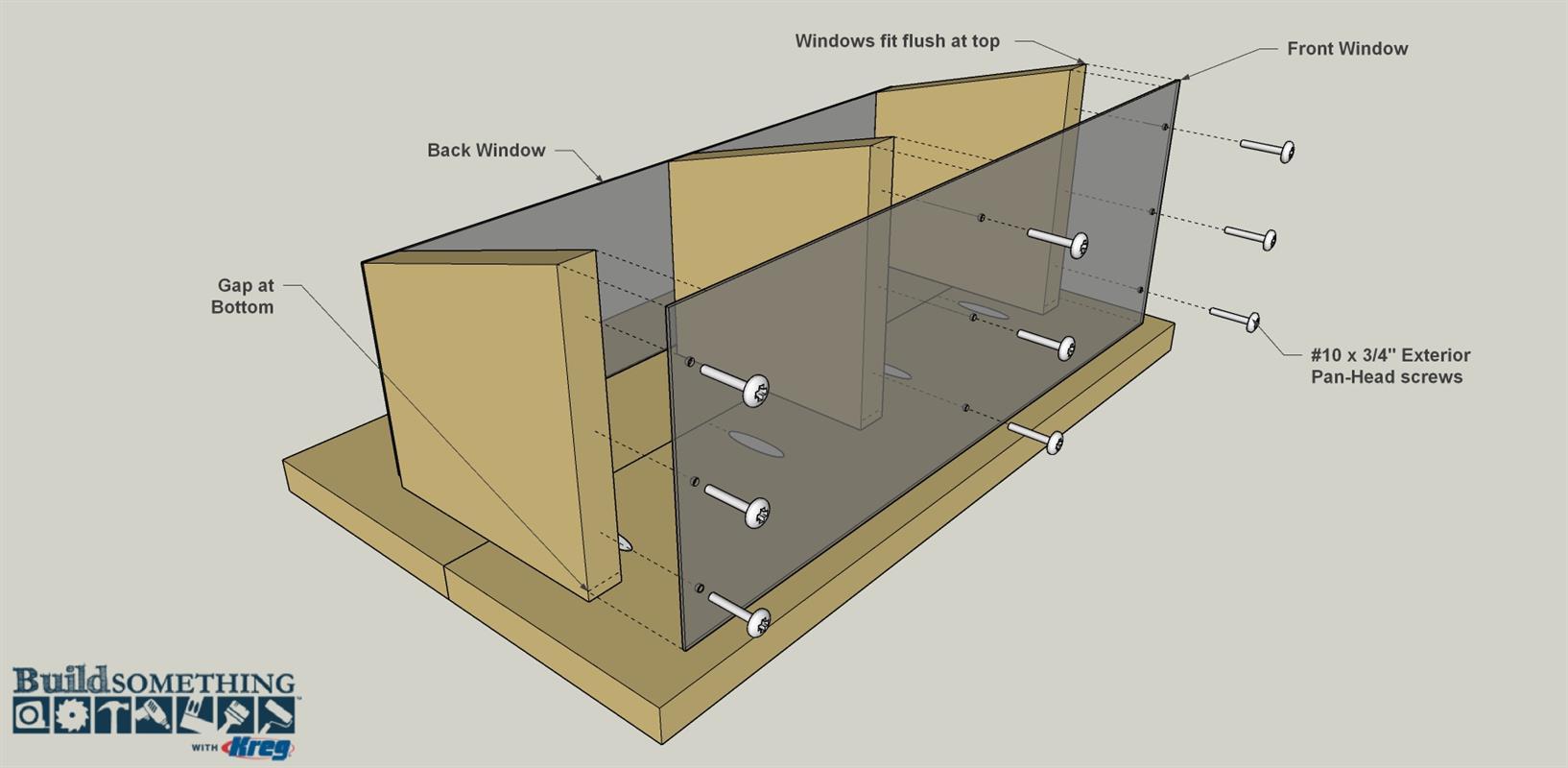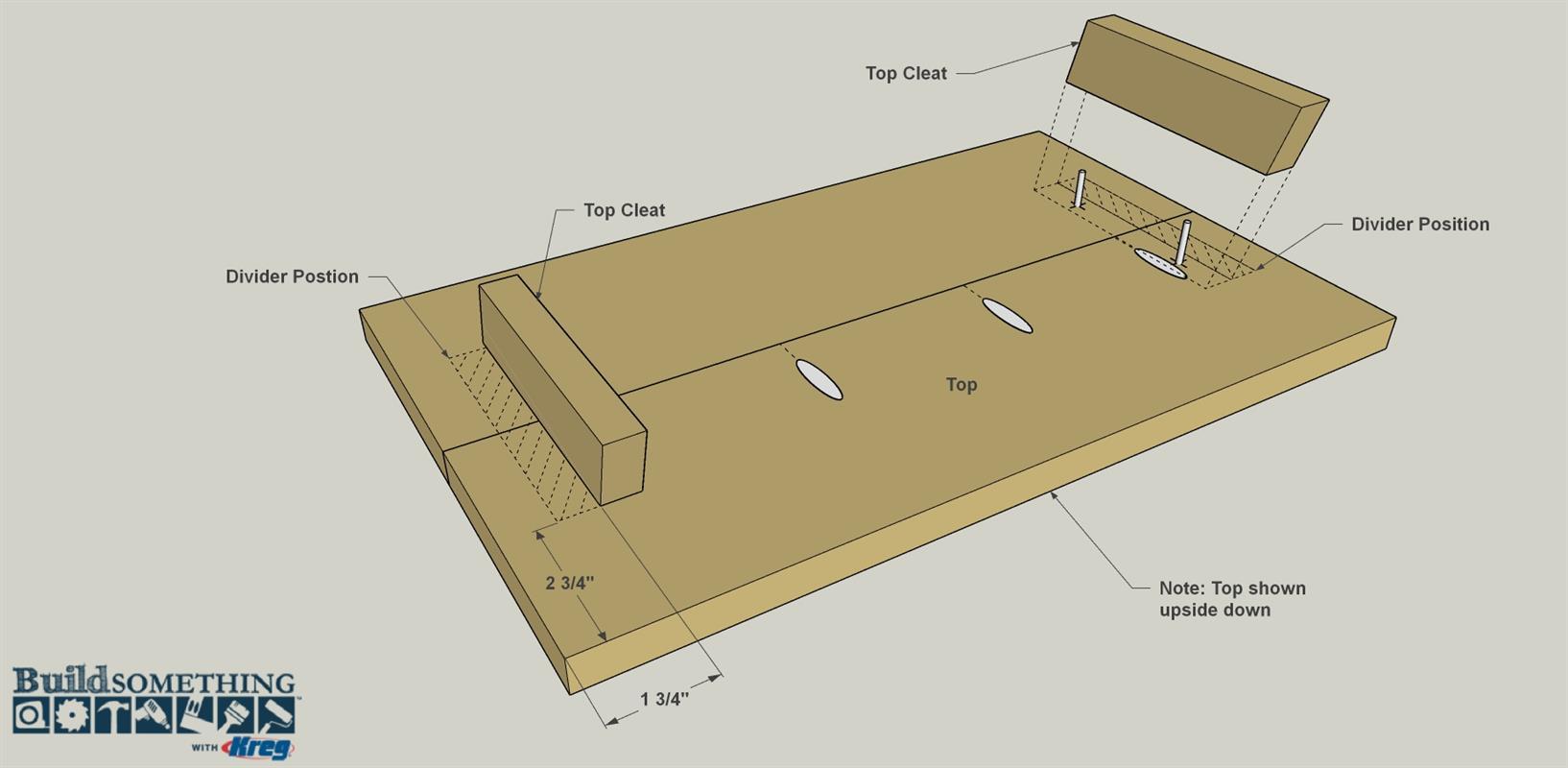Bird Feeder
By Kreg ToolCreate a backyard haven for birds by building your own bird feeder. You can make this one from a single cedar board and a small sheet of clear polycarbonate plastic. The lid lifts off for easy refilling. You could attach the feeder to a wood post, or mount a pipe flange and pipe to the underside
Directions
-
Make the Top and Bottom
Start by cutting two Bottom boards and two Top boards to size from 1x6 cedar, as shown in the cutting diagram. Set your Kreg Jig for 3/4"-thick material and, in just one Top and one Bottom board, drill pocket holes at the locations shown. If your cedar board has one rough face and one smooth face, be sure to drill the pocket holes in the rough face. Lay out the locations for three pilot holes on each of the Bottom boards, as shown. La out two pilot holes on each of the Top Boards, as shown. Drill the holes through all of the boards using an 1/8" drill bit.
-
Assemble the Top and Bottom Panels
Align the two Bottom boards as shown. Apply waterproof wood glue to the mating edges, and clamp the boards together. Secure them with 1 1/4" Blue-Kote Kreg pocket hole screws. Repeat the same process for the two Top boards.
-
Cut the Dividers and Cleats
When cutting short pieces on the miter saw, it’s always a good ideal to cut them from the ends of a longer board. This allows you the ability to keep your hands at a safe distance from the blade, yet keep the material stable enough for cutting. Angle your miter saw to 15° and then, using the remaining portion of the cedar board, cut the two Top Cleats to length. Next, cut the three Dividers to final length, as shown. Note that each Divider is cut square (0°) at one end, and cut at 15° at the other end
-
Attach the Dividers
Mark the locations of the three Dividers on the Bottom panel, as shown, so that the Dividers align with the pilot holes you drilled earlier. Apply glue to the bottom edge of the first Divider, and then clamp it in place. While the clamps are still in place, use the pilot holes in the Bottom as guides to extend the 1/8" pilot holes in to the Dividers. Thes holes will prevent splitting the wood as you drive in screws. Now secure the Divider to the Bottom by driving two #10 x 1 1/2" exterior pan-head wood screws into the holes. Repeat this process for the other two Dividers.
-
Make the Windows
Cut the Front Window and Rear Window to size from a sheet of .093"-thick polycarbonate (Lexan), as shown in the cutting diagram. You can cut this material using an inexpensive scoring cutting tool that’s available where the polycarbonate plastic is sold. Sand the cut flat by hand using 120-grit sandpaper. Now lay out the hole locations shown in each Window. Then, drill the holes using a 1/8" drill bit. Make sure you have the plastic supported on a scrap of wood to prevent bending, which could cause the polycarbonate plastic to crack.
-
Drill Window Mounting Holes
Position the Front Window and Back Window against the Dividers so that the upper edge of each is flush with the sloped upper end of the Dividers. Use clamps or masking tape to hold the Windows in place at the top of all three and flush with the faces of the outside Dividers. With a sharp pencil or a nail, mark the hole locations on the edges of the Dividers. Remove the Windows, and then drill 1/8" pilot holes in each Divider at the marked locations. Repeat the process for the other Window. Don’t install the Windows yet, though.
-
Attach the Top Cleats
Now you can attach the Top Cleats to the underside of the feeder Top. This is done by following the same procedure you used to attach the Dividers to the feeder Bottom. Before you attach the Cleats to the Top, though, position them temporarily to ensure that the cleats will slide into place between the two outer Dividers. Then, apply glue to one edge of each Top Cleat, clamp it in place, drill pilot holes, and then drive in #10 x 1 1/2" exterior pan-head wood screws.
-
Add Finish If Desired
Since a bird feeder sits outside, your first instinct is probably to add finish to protect it. If you do that, though, you need to make sure the finish won’t be toxic to the birds. That’s one reason we built the feeder from cedar. It can be left unfinished and will hold up to the elements just fine. It will turn gray over time, though. We decided to wipe on a few coats of salad-bowl finish—but only to the outside surfaces, not to the interior areas where birdseed will sit for extended periods. The salad bowl finish will wear away in the elements outdoors, but it’s easy to renew if you should decide to.
-
Add the Windows and Top
Once the finish dries, if you apply any, you can attach the Windows by driving #10 x 3/4" exterior pan-head wood screws into the pilot holes you drilled in the dividers. After that, all you have to do is slip the top onto your feeder. If you want to mount your feeder on a freestanding post, one great way is to attach a metal pipe flange to the underside of the Bottom, making sur it’s centered. Then you can drive a piece of pipe into the ground, and thread the feeder on to it.



